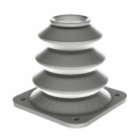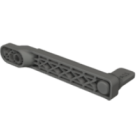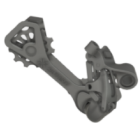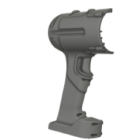Why do 3D prints fail?
Even the most experienced users encounter failed 3D prints — and not always for obvious reasons. Despite major advancements in hardware, software, and materials, additive manufacturing remains a process highly sensitive to input quality, environmental conditions, and machine parameters. Recognizing why 3D prints fail is essential not just for troubleshooting, but for building repeatable, reliable workflows — especially in professional and production settings.
Common failure points
Most print failures can be traced to one of three root causes: poor model preparation, incorrect machine settings, or physical/environmental disruptions.
A weak STL file, for example, might have non-manifold edges or gaps that slicing software misinterprets. Similarly, if your print parameters — like temperature, speed, or layer height — are mismatched with the material, the print can warp, shift, or under-extrude. Even something as mundane as a clogged nozzle, uneven powder distribution, or unstable build plate can compromise the entire job.
In powder-based systems, especially with SLS, uneven powder spreading or insufficient bed temperature can result in delamination or fragile structures. For resin printers, improper curing or contamination of the resin can produce tacky, soft, or distorted parts.
Design-related issues
Sometimes the failure isn’t mechanical, but conceptual. A part designed without consideration for the printing process may include unsupported overhangs, walls that are too thin, or tolerances that exceed the printer’s accuracy. These issues might not be flagged in the slicer, but will reveal themselves during or after printing.
In more advanced cases, parts fail not during printing, but in post-processing — cracking during depowdering, deforming during cooling, or not fitting as intended during assembly.
The human factor
Even in automated workflows, human oversight matters. Forgetting to update firmware, using degraded materials, skipping calibration, or neglecting machine maintenance can all lead to print failures. In professional setups, failing to document and standardize settings between prints introduces inconsistency — a silent killer for repeatability.
Experience plays a major role here. Knowing when something feels off — a strange sound, a surface anomaly in the first few layers, or an unusual temperature fluctuation — can save a print in progress. Without that instinct, minor problems often snowball into full build failures.
Preventing failure through process awareness
Successful 3D printing depends on an interconnected chain of decisions. From CAD design and file repair to slicing, setup, material handling, and environmental control — each stage influences the final output. That’s why developing a robust, tested process and treating every print as part of a controlled workflow is the best insurance against failure.
When prints fail, they’re not just a waste of time and material — they’re a signal. Listening to that signal, identifying the root cause, and adjusting your process accordingly is how you grow from operator to expert.
Summary
3D print failures are not a sign that the technology is unreliable — they’re a reminder that it’s precise. With so many variables at play, understanding why prints fail is the first step toward mastering the full workflow. Whether it’s design oversights, setting mismatches, or equipment issues, every failure is an opportunity to improve — and in additive manufacturing, process is everything.
Explore also
- What is the 3D printing process?
- 3D printing process step by step
- How to make a 3D model for printing?
- What is 3D slicing in printing? Key to print quality and success
- Understanding 3D print settings for better results
- The additive manufacturing process: how 3D printing builds layer by layer
- Printing 3D
- What is post-processing?
Related categories













